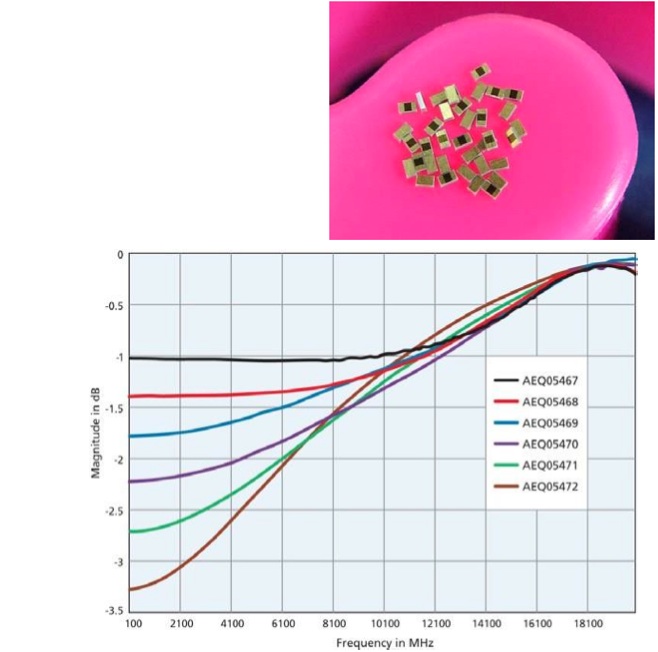|
|
| |
 From Knowles Capacitors comes a line of Gain Equalizers from their Dielectric Laboratories (DLI) facility. They are designed to compensate for module Gain Slope and offer excellent, repeatable microwave performance. This is achieved by application of precision thin film fabrication, coupled with DLI’s high permittivity ceramic materials, to give a unique design solution. From Knowles Capacitors comes a line of Gain Equalizers from their Dielectric Laboratories (DLI) facility. They are designed to compensate for module Gain Slope and offer excellent, repeatable microwave performance. This is achieved by application of precision thin film fabrication, coupled with DLI’s high permittivity ceramic materials, to give a unique design solution.
Latest to be released is the 0302 size EW Series - a new breed of Gain Equalizer. They are a low cost solution that provides slope correction from DC to 18 GHz. of greater than 3 dB. They are designed for superior, repeatable microwave performance to compensate for gain roll-off and VSWR mismatch losses and are a good match to a 50ῼ line width for optimal broadband performance. Six slopes are available and are footprint interchangeable for optimizing module gain flatness from 1 to 3.5dB. Solderable terminations are compatible with solder SMT & conductive epoxy assembly and pick and place equipment. No ground connection is required. They are available in tape and reel packaging for high volume applications. Engineering kits are offered which contain all 6 slope part types.
Applications include Broadband Microwave Modules; EW, ECM, ECCM and as an Equalizer utilized as a compensation circuit to correct for loss slope created by other circuit elements, such as amplifiers.
DLI Gain Equalizers employ monolithic construction with a precision thin film conductor and resistor films together with proprietary high dielectric constant ceramics for superior RF performance repeatability. Integrated R and C values are realized to produce the desired gain slope. DLI’s miniature thin film Gain Equalizers have a microwave frequency response which is so close to ideal that it can be modelled by the simple parallel R-C circuit.
A gain equalizer is intended to be used in small signal applications, the limitation is principally thermal dissipation being a combination of very small part size and low thermal conductivity of printed wire board materials. The dissipated power will be greater for signals in the lower frequencies in contrast to the higher frequency end of the design range where the insertion loss reaches a typical value of 0.2 dB. Typical dissipated power limit is 30 mw or greater for baseplate temperatures up to 80°C.
|
|
|
|